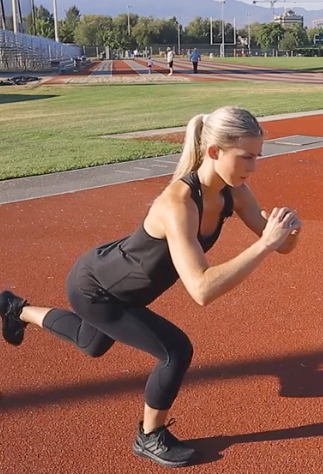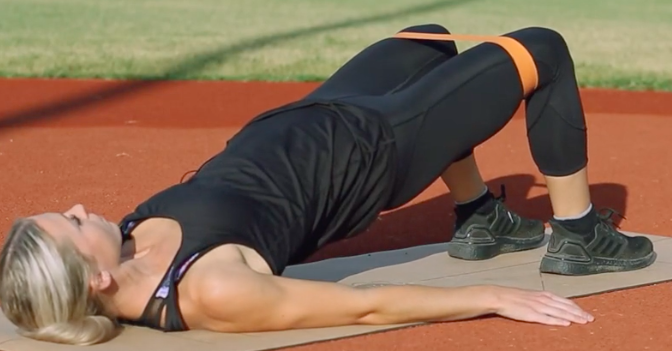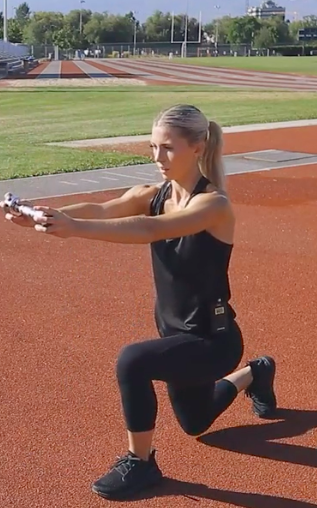4 Easy Exercises for Runner's Knee Recovery
Mar 29, 2023
Runner’s knee, clinically known as patellofemoral pain syndrome, is a debilitating condition that affects a large percentage of runners. This article is going to teach you how to tell if you’re experiencing runner’s knee, what causes it, and most importantly, exercises for runner’s knee that you can easily add to your training and do from the comfort of your home.
 Patellofemoral pain syndrome (runner’s knee) is a broad term that umbrellas various types of pain in and around the patellofemoral joint. (Image credit: rumruay/Adobe Stock)
Patellofemoral pain syndrome (runner’s knee) is a broad term that umbrellas various types of pain in and around the patellofemoral joint. (Image credit: rumruay/Adobe Stock)
Definition of Runner’s Knee
Runner’s knee is a global term used to describe pain in and around the patellofemoral joint and surrounding tissues. It typically presents as a dull, aching type of pain that gets worse with activity and ceases with rest.
The patellofemoral joint is the joint between the kneecap (patella) and thigh bone (femur). It is covered with cartilage to help the patella move smoothly up and down over the femur. This joint helps to reduce friction in the knee and acts as a shock absorber during movement. It is incredibly important in activities such as jumping, walking, and running.
Causes of Runner’s Knee
Overuse, muscle imbalances, and improper loading typically combine to create irritation and inflammation in the structures surrounding the patellofemoral joint. The patella can be pulled out of alignment from tight or weak supporting muscles, the bursae (fluid-filled sacs that act like shock absorbers) can become swollen, and poor running form can all contribute, as well.
Because of the multi-faceted nature of runner’s knee, the root of the problem can be hard to pinpoint. However, addressing some of the common culprits in a systematic way is a good approach to treatment and eventual recovery. Strengthening the muscles that support the knee through runner’s knee exercises is a great place to start.
What Is the Fastest Way to Fix Runner’s Knee?
There is good evidence that strengthening the hip muscles is one of the best ways to combat runner’s knee, even more effective than strengthening the knee alone. This is because a common problem amongst runners is a lack of hip abductor (moving the hip away from the middle of the body) strength, and this can drastically affect running form in the following ways.
- Hip instability: The hip abductors stabilize the pelvis by pulling it upwards on the planted leg while running. When they’re weak, it allows the pelvis to sway back and forth (destabilizing the hip) and fails to support the femur through external rotation.
- Knee alignment: Weak hip abductors allow the knee to cave inward while running (known as knee valgus), which can place excessive strain on the knee joint and cause wear on its internal structures, resulting in conditions like runner’s knee.
- Overpronation: When the knee caves it can also cause the foot to roll too far inward, collapsing the arch, straining the ankle, and consequently stressing the knee as force bleeds through the system from the ground up.
 Notice the position of this woman’s knee relative to her hip, and also the way her foot is turned outwards. How do you think her foot, ankle, and knee will react if she lands her next step in a similar position? (Image credit: Pheelingsmedia/Adobe Stock)
Notice the position of this woman’s knee relative to her hip, and also the way her foot is turned outwards. How do you think her foot, ankle, and knee will react if she lands her next step in a similar position? (Image credit: Pheelingsmedia/Adobe Stock)
All of this contributes to runner’s knee by way of excessive stress on the knee joint. This gets all the more amplified in runners because they sustain forces of 2-3x their body weight through the leg every time they land on the ground, and even more depending on the speed at which they’re running.
Take a 150 pound runner and multiply their weight by three, they now weigh 450 pounds. Now consider that the average runner takes approximately 1500 strides every mile. That’s 675,000 pounds (337.5 tons) of force going through the body of that runner; every single mile.
This is why it’s no mystery at all that upwards of 80% of runners experience lower extremity injuries, most predominantly at the knee. We haven’t prepared ourselves to deal with that kind of force. Because strengthening the hip muscles has been shown to bring about the most success, that’s exactly what we’re going to do to get us on the road to recovery from runner’s knee.
Hip Abductor & Leg Exercises for Runner’s Knee
Both men and women with runner’s knee have greater hip adduction (moving towards the midline) while running than those without runner’s knee. Women even more so, as a result of having on average wider pelvis’ and also because of different levels of hip laxity experienced during puberty and at different times throughout each menstrual cycle.
Try the following exercises to help strengthen up the hip and leg muscles. Developing these muscles will better support the knee and pelvis, resulting in decreased stress on the patellofemoral joint, and a long-term solution to runner’s knee pain.
Band Walks

Instructions:
- Place a mini band around your thighs, just above the knee
- Stand in a quarter squat position by bending the knees slightly
- From here, walk laterally to one direction for three steps, then reverse, and walk the opposite direction for three steps
- Focus on feeling the muscles on the outside of your hip working
- Repeat back and forth for 30 seconds
Lateral walks are a great way to wake up sleepy hip abductor muscles. Make sure to do this movement under control and really feel your hips working to pull your legs apart against the resistance of the band.
Mini Single-Leg Squat


Instructions:
- Stand on one leg with the knee slightly bent to engage the hip and thigh
- From here, move your free leg behind you, bending the planted knee down into a squatting position
- Only go as low as your strength and pain allows, we want to keep this movement pain-free, so only go to the level of mild discomfort
- Push yourself back up into the start position
- Focus on keeping your knee in line with your toe the whole time, don’t let it collapse inwards
- Repeat this for 10 repetitions on each leg, or, try to do it continuously for 30 seconds on each side
Standing on one leg alone turns on all the stabilizer muscles in your hip. By lowering yourself into the squat, you’re then loading these muscles further, while also getting the thigh muscles involved. This is one of the best exercises you can do to help prevent and recover from runner’s knee.
Dynamic Glute Bridge


Instructions:
- Place a mini band around your thighs, just above the knee
- Lying on your back, start with the legs bent with the heels tucked close to your butt
- From here, drive the knees outward against the mini band and press your hips up into the air, squeezing the butt muscles
- Lower down under control and repeat
- Maintain the tension outwards against the band the entire time
- Repeat this for 10 repetitions, or, 30 seconds continuously
This exercise works your glutes and hamstrings to extend the hips, with extra emphasis on hip abduction by applying outward pressure on the band. It’s a great way to work the hip muscles without putting too much load on the knee if it is flared up or in pain.
Reverse Lunge


Instructions:
- Start in a standing position, feet hip width apart
- Choose one leg to work on
- Step that leg behind you and drop into a lunge position
- Keep your chest tall, and bend both knees to approximately 90°, the back knee should hover just above the ground
- Once you’ve reached that position, press yourself back up to standing
- Repeat on the same leg for 10 repetitions or 30 seconds
- Switch legs and repeat
This may be the most challenging exercise we’ve included if you’re currently experiencing runner’s knee pain, however, it is an important exercise to work up to and be able to train as a runner. It helps to strengthen all the muscles of your leg in concert with each other. You can hold a weight to make it more difficult as you progress.
Knee Rehab Program for Runners

These exercises were borrowed from our programming here at Dynamic Runner. We have hundreds of follow-along routines with different areas of focus such as mobility, strength training, injury prevention, and more! Try out our 6 Week Knee Function & Rehab Program and experience the results for yourself. Click here to try 7 days free!
Written by Eric Lister – Certified Personal Trainer & Corrective Exercise Specialist





